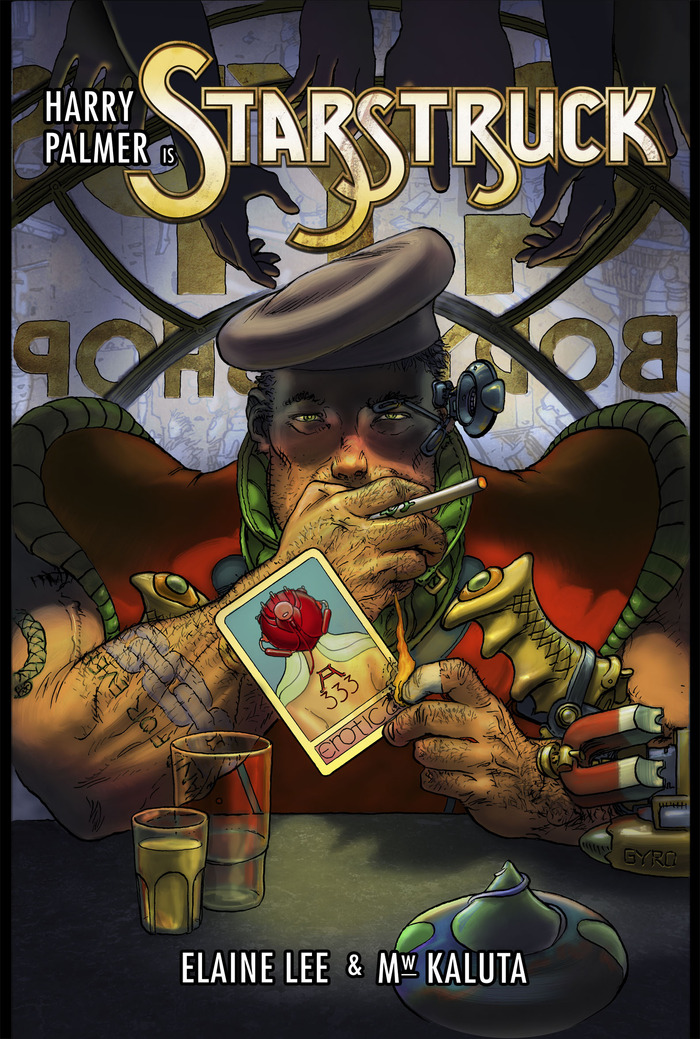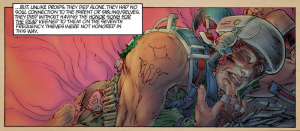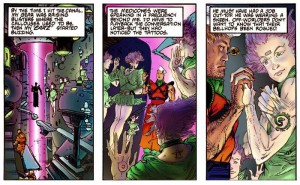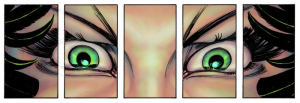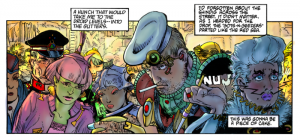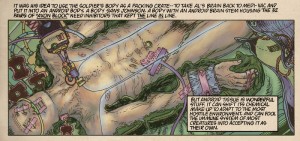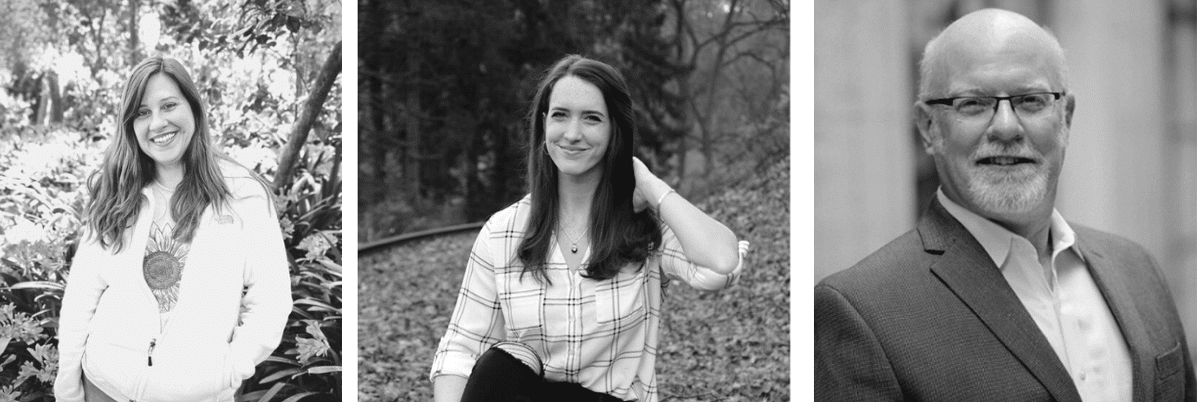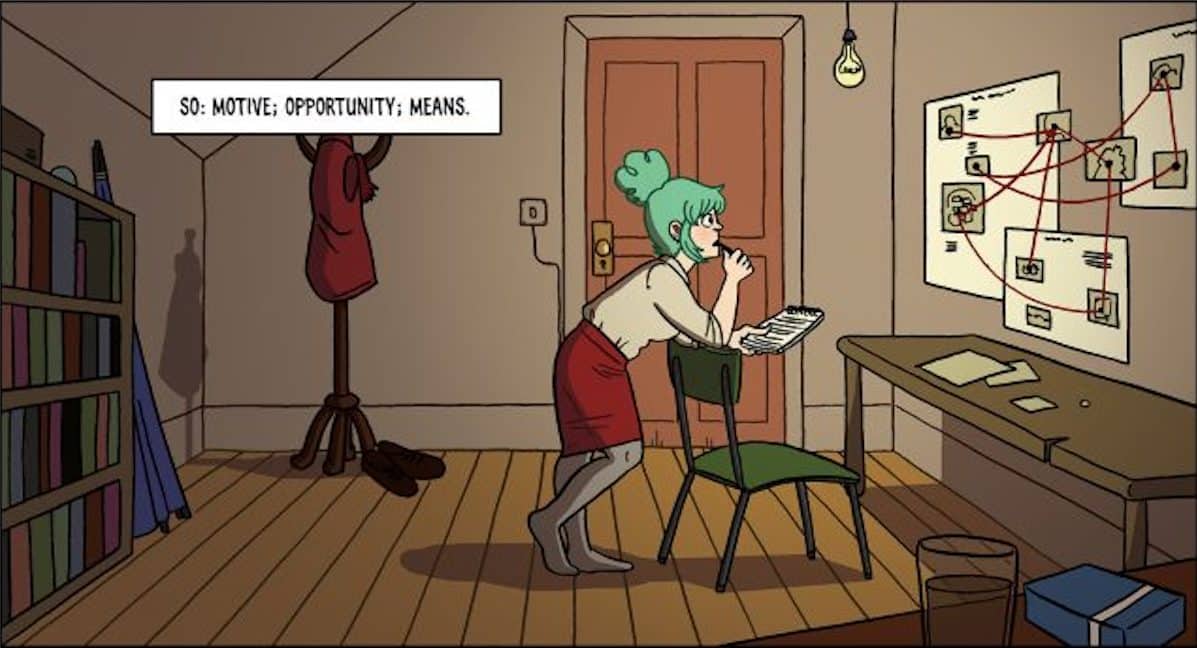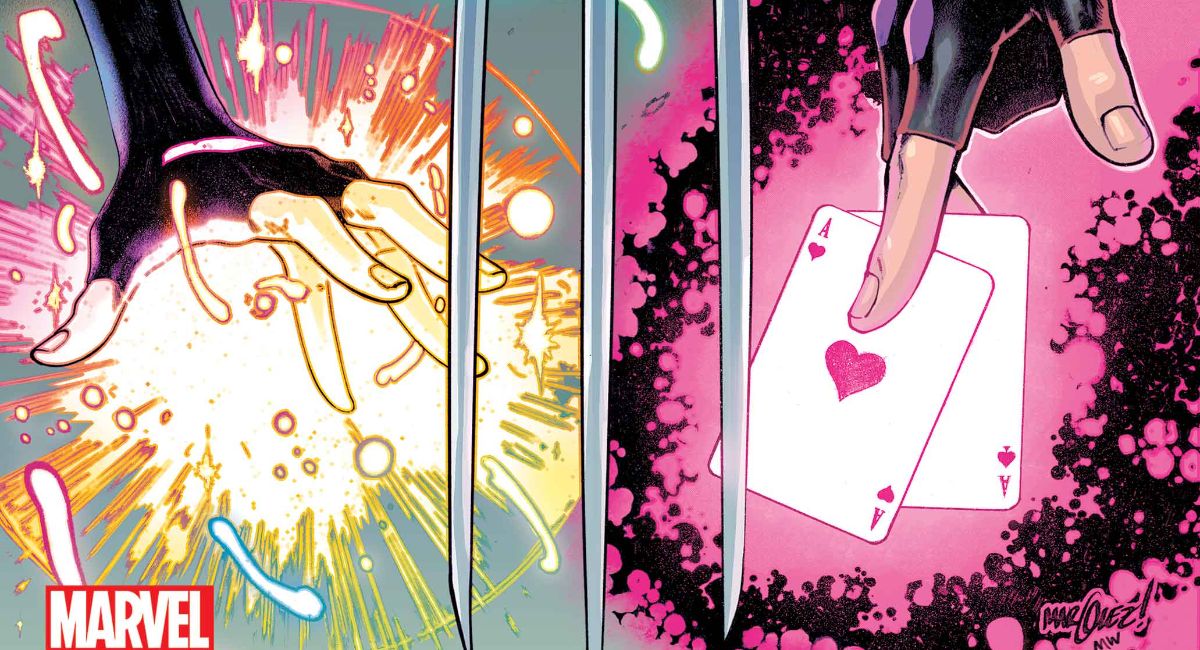Kickstarter has turned in to my new ESPN. You could have done a March Madness bracket of Kickstarter projects last month, but everyone wins. Elaine Lee and Michael Kaluta’s project involves reprinting Harry Palmer’s story from Starstruck—originally published with Marvel/Epic, but with an additional 88 new pages. 24 hours after launch they were sitting at 50% of the $44,000 goal. They have over 20 days left with less then four thousand dollars to hit goal.
It’s not everyday that I get to talk to a well respected and adored author like Elaine. I feel very fortunate to have had a moment of her time and pick her brain about the history of the book, her thoughts on the future of self publishing, and what we have to look forward to when she hits her goal. Go to the project page and pledge your heart out.
Henry Barajas: We were introduced through our mutual friend Charlie Harris. How do you two know each other?
Elaine Lee: Charlie is a great guy! I met Charlie via Facebook and we chatted a bit, every so often, the way people do on Facebook. Hmmm… this is a bit delicate. One of my Facebook friends “met” Charlie in a thread on my page. The friend ordered a copy of the Starstruck trade paperback from Charlie’s shop (Charlie’s Comic Books in Tucson) and Charlie mailed out the book, but the check bounced. It took some time to resolve the matter and I intervened on Charlie’s behalf. I felt that I had to. They’d met in my “house,” so to speak. And I understand the slim profit margins that most comic shops are working with. (Let me state, for the record, that the FB friend seems like a very nice guy and most of us are struggling with the lousy economy.) So… during this time I had a couple of phone chats with Charlie and we hit it off to the point that I would say we’re kindred spirits. Before we launched the Kickstarter campaign, I gave Charlie a call and asked his advice on how to approach a couple of specific elements of the campaign. And Charlie introduced me to you!
Barajas: You have hit 50% of your goal in 24 hours, how do you feel about this overwhelming response by your supporters?
Lee: The strongest emotion I felt at the moment we hit the halfway mark was relief! You never know how these things are going to go, even when you’ve done everything you can to prepare for them.
But it’s wonderful to know that the people who love your work really have your back. Even though running a campaign is both exhausting and non-stop, I really enjoy the correspondence with our donors. They’re incredibly supportive and an unusually intelligent lot!
However… (pause for dramatic effect), being the queen of worst-case scenarios, I am taking nothing for granted and will keep working the campaign to the best of my ability. The backers who pledge on the first day—family, friends and longtime fans—are your sprinters. But we’re in a marathon. The hares have crossed the finish line and the tortoises are gradually coming in. Calling the later backers tortoises is no insult, by the way. I am a Kickstarter tortoise. I’ve pledged to 22 projects and never on the first day. Usually I sign up for reminders that the campaign exists, so that Kickstarter sends me emails. Then, I pop in near the end and pledge.
Barajas: These characters have been brewing in your minds for over thirty years, how do you keep the series fresh?
Lee: Well, after a while, the characters stop being these things you’ve created and start walking around your brain, doing things on their own. They can surprise you! It’s almost like they have nothing to do with you. You’re the historian. You can put your spin on events—give the story your slant—but the characters have minds of their own. At this point, the Starstruck Multiverse exists somewhere out there in the ether, between wherever it is I am and wherever Michael Kaluta is.
But this question does bring us back around to Harry Palmer, the protagonist of the book we’re attempting to Kickstart. Harry had been a background character in the Starstruck stories that appeared in both Heavy Metal and the Marvel/Epic graphic novel. He was a bartender in the Sailor’s Grave, the bar on Rec Station 97, where Brucilla the Muscle meets Galatia 9. By the time we were ready to get started on the Epic series, I was a little tired of writing the female characters that had been so prominent in the GN. That might seem funny to fans who were just getting to know those characters. To our readers, the characters had just recently appeared on the scene. But I had been writing them for years, by that point. We had done two productions of the play and I had done several rewrites of the play between the two runs. And I had played Galatia 9 onstage. Then, Michael and I had done the stories that wound up in the graphic novel.
A lot has been said about the large number of strong female characters that populate Starstruck, but I was ready to bring a strong male character into the mix. And I fell in love with Harry. Harry Palmer may be my favorite character. He’s certainly the warmest character and the only one with a love story. Not sure what it says about me that the guy is the only lover in the bunch!
Barajas: How does it feel to not have to work with a publisher and do this on your own?
Lee: Both frightening and exhilarating, but I should be clear that this was not really a choice. It would be much easier for me if I could just work on the creative side with Michael, rather than having to plan and execute a Kickstarter. It’s a hell of a lot of work and, as mentioned above, you can’t predict the outcome. But, thank the gods of comics that Kickstarter exists, because doing a big creator-owned project like this is almost impossible to do any other way, unless you’re independently wealthy or have a day job.
The traditional comics business model is no longer working for most independent creators. Michael and I loved working on the Starstruck Deluxe Edition with Scott Dunbier at IDW. In fact, if Scott hadn’t called us, it’s unlikely we would have come back to finish Starstruck. And IDW’s contract allowed us to keep our other rights. But that book was largely a reprint book, though it featured Lee Moyer’s beautiful painted color and Michael expanded many of the pages. The only way we could do a book with 80 new pages and make our rent and grocery money was to do it with Kickstarter.
Barajas: What can we expect from the new pages?
Lee: Lots! In some cases, existing pages will be given breathing space and things that were said in the Epic comics will now be shown. There will be more flashback scenes of Harry’s time in the Droid Wars and Tri-Clone invasion. When a character from the earlier stories is mentioned in conversation, we’ll be more likely to go into a flashback of Harry’s past with that character. There will be more about Android culture, clones, kidnapped Galactic Girl Guides, living ships and Running In Place®, the most popular and dangerous means of life extension in the galaxy. We’ll also take Harry further into his future. Due to the fact that the 12 issues we were going to do for Epic suddenly became six, the story we’d plan to give Harry was truncated. We will now give him his due.
Barajas: Who’s your dream Starstruck cast for the play?
Lee: Oh, gosh! You know, if I had things my way, and if I had an angel investor with an open wallet and no interest in interfering with my decisions, I would probably cast a play with hungry, young, talented unknowns from NYC. And this is probably why I’m not rich! New York actors are so much more interesting to me than the LA crew, although we might cast someone from LA to play Erotica Ann 333, since so many of those young women look like pleasure droids. Or clones. Sometimes I’ve looked at a primetime show and have hardly been able to tell one character from another, as they’re all so perfect that their features aren’t recognizable. Starstruck characters have flaws.
Barajas: With all the changing hands of publishers over the last thirty years, what would you have done differently?
Lee: That’s really hard to say. We did what we did when we did it. We couldn’t have done anything else, because we were who we were at the time.
To indulge in a bit of fantasy here, if I could go back in time to reappear in my 18-year-old body and have a complete, adult life do-over, but knowing what I know now? I’d write the Starstruck play as a theatre student in college, so I could work out the kinks in a place where everything was paid for. While I was in college, I’d start investing a little money in the electronics companies that would soon be going through the roof. (Did I really need all that pizza and beer? In fact, there’d be much less “sex and drugs and rock-n-roll” the second time around. Nose to the grindstone!) After I got to New York, I’d immediately start meeting the people I’d need in order to do the play in NYC, and I’d transfer my growing electronics portfolio over to Apple, which has just now come into existence. Probably still have to do the soap opera, to get that working actor respect. Then I’d hang out at the Library Restaurant on 92nd Street, until I met Michael Kaluta. We’d do the play, only this time I wouldn’t choose Mr. Lousy Producer to give up the option to. I’d choose Mr. Track Record Producer. While the play was successfully running Off-Broadway, I’d use my Apple money to pay Michael to draw Starstruck, so we wouldn’t have to roll pennies to buy pasta for a year. Then I’d hire a publicist to tell everyone in the world exactly why they should love us. Oh… and I would never, ever, EVER give up that great apartment on West 83rd Street. That’s the one thing I truly regret.
Barajas: Who’s helping you with logistics and printing? How did this become a Kickstarter project?
Lee: It was my idea to do the Kickstarter and I did all of the research into printing and that sort of thing. I started donating to Kickstarter projects a couple of years ago and have been thinking about this for a while. If we get extra money, I will hire someone outside to do fulfillment. If there is no extra money, my husband will be wrapping more packages than he ever thought possible. Richmond was a Starstruck fan, before we met. He’s been bugging me for years to go back to it and I would say, “You really don’t want that.” I become obsessed when I’m working on this thing.
Barajas: How do you feel about this model of publishing and what this means for the future of self publishing?
Lee: Ask me at the end of this campaign, once I’m sure we’ll be funded! However, my sister and I self-published a book before Kickstarter, before Facebook, before eBooks and before Amazon became what it is today. That was a horrifying experience. We did great with the writing and the production. Two of my comic artist pals did the illustrations, Herb Trimpe penciling and James Sherman inking. We had a great book launch event in LA, to benefit an animal rescue organization, with name comedians performing and name actors attending, and a funny “men and their dogs” fashion show. But getting the physical books on bookstore shelves was impossible. Spreading the word through a traditional publicity campaign was costly and less than effective. And we had to put a lot of our own money into it. We never made back that money.
Kickstarter is a godsend. It’s allowing so many artists and writers to publish original work. And it’s encouraging more women creators to get into comics, as they don’t have to shoulder their way into mainstream comics, which still has a largely male readership. (Hey, I love fights and things that explode, but it’s not for everyone.) At the same time Kickstarter is raising funds for your project, it’s generating publicity. Even if you don’t meet your funding goal, lots more people will know about your work by the end of the campaign.
I have one little fear for the future of crowd funding, due to the huge success of the Veronica Mars campaign. So many of my friends contributed to that campaign, because they really wanted to see the movie made, and I do respect and understand their reasons. I also understand why the show’s creator and star turned to Kickstarter. But I didn’t donate to that campaign. In the words of Foghorn Leghorn, I felt “a little eeshy” about it. I felt eeshy because of what the hugely successful campaign was saying to movie studios. For major movie studios, producing a movie used to come with a risk attached to it, but when it paid off, it paid off big. I’d hate to see studios step back and let the creatives do all their work for them. And I’d hate to see Kickstarter overrun by these huge projects, because the studios figure they can sit back and wait for the artists to bring the cash to them. Where would that leave the rest of us?
On the other hand, if Joss Whedon ran a campaign to fund a new Firefly series, I might have a hard time not clicking that donate button!


